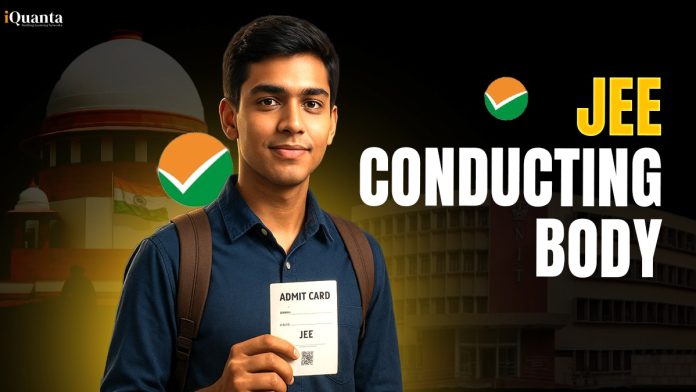The National Testing Agency (NTA) is an autonomous and self sustained testing organization in India established by the Ministry of Education to conduct national-level entrance examinations in a standardized, fair, and efficient manner. It has been operational since 2018. The headquarters of NTA is located in New Delhi, India. Currently it is responsible for conducting various national level entrance exams in several fields such as engineering, management, pharmacy including JEE Main, NEET-UG, NET, CMAT, GPAT and so on. Overall it conducts 15 highly competitive entrance exams. National Testing Agency(NTA) is a registered society, under the societies registration Act,1860.

Join this free JEE Prep Group to Get Free Study Material, Preparation Strategy by Toppers, Latest Updates and More!
Why NTA?
National Testing Agency(NTA), responsible for conducting JEE Main exams, was established by the Govt. of India in 2017.JEE Main exam is being conducted by NTA from 2019 onwards, this exam was being conducted by Central Board Of Secondary Education till 2018. The need of NTA’s existence arose from the excessive workload of CBSE. Previously CBSE had too many responsibilities like conducting Board Exams, designing school curriculum, managing school affiliation and so on. This was not sustainable and led to quality concerns. Past incidents of paper leaks and errors in CBSE-managed exams (like NEET and JEE Main) raised concerns. In 2017, the central government established the National Testing Agency (NTA) as an autonomous body under the Department of Higher Education within the Union Ministry of Education. NTA brought in better technology, security, and fairness.
NTA Leadership :
The current chairman of NTA is Prof. Pradeep Kumar Joshi (former UPSC chairman), he holds the top leadership position and oversees the agency’s direction and policies.
Pradeep Singh Kharola, an experienced IAS officer, currently holds the position of Director General on an additional charge basis.
Roles of NTA in JEE exam :
- Exam Planning – NTA administers the JEE main exam including syllabus alignment ( typically based on NCERT), mode of an examination (computer based test- CBT), Exam structure and multiple sessions per year ( typically January and April)
- Question Paper preparation – NTA uses experts to develop a standard question paper. Psychometric analysis to ensure question quality, difficulty balance, and fairness. Different sets of question papers are used across multiple shifts/days.
- Security and Fairness – NTA ensures secure printing and distribution of digital papers across all the exam centres. NTA also ensures Biometric verification, CCTV surveillance, and frisking at centers. NTA detect malpractising through AI based monitoring. All the exam centres across India are standardized to maintain fairness, thus creating a suitable environment for all the candidates.
- Computer Based Test (CBT) – NTA sets up exam centres with required technology and backups. JEE Main exam is conducted fully in a CBT mode.
- Normalization and Scoring – Since JEE Main is conducted in a multiple shift. NTA uses a normalization process to ensure equitable comparison of scores across different shifts. NTA calculates and publish score of each candidate.
- Result declaration – NTA publishes scores for each session, the result of which are used for admission in IITs and NITs.
- Public communication and support – NTA manages application process, admit card issuance, helpdesks, grievance redressal, and communication in multiple languages.
How Does NTA Select Centres for Examination?
The National Testing Agency follows a structured and multi-step process to select exam centres for exams like JEE Main. Here’s a breakdown of how NTA select exam centres –
- Student preferences – When students fill out the exam forms they are asked to select preferred cities (usually 4 choices), NTA uses this data to understand demand concentration in various cities. They make sure that allocated centres are as close to the candidate’s preferred location, making centres easily accessible for the candidates.
- Availability of Suitable Venues – NTA chooses centres based on availability of schools and colleges with required infrastructures like labs and power backups.NTA also makes sure that there is a capacity to accommodate candidates.
- Technical Requirements for CBT – For a computer based test like JEE Main, the centres must have stable internet connections, enough numbers of working computers, adequate power supply, CCTV surveillance and a biometric system.NTA runs tests to make sure the centres meet these CBT standards.
- Security, connectivity and Monitoring – NTA ensures secure transportation of digital papers to all the shortlisted centre. They also check if the centres have jammers, 24*7 surveillance and frisking facilities.NTA avoid areas prone to network issues, law & order concerns, or low accessibility.
- Dry runs and audits – Before finalising centres NTA may conduct mock tests and dry runs, so that there is no any chances of mishappening during real exam time.
Click Here to Enroll to JEE 2026 Course!





